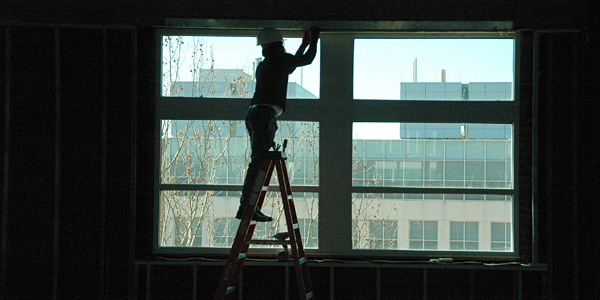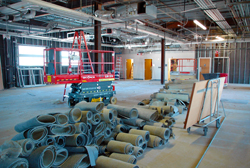Big Savings on Renovation Project

When demolishing the interior of a 17,000-square-foot office in preparation for upcoming renovation, why throw away building material that can be reused or recycled? At Corporate Research I on Centennial Campus, the university’s Repair and Renovation Services turned its latest and largest demolition project into a model for more sustainable waste diversion.
With the help of NC State’s Waste Reduction and Recycling Office, the crew recycled more than 72 tons of copper, carpet, drywall and metal while saving $30,500 worth of additional items, including doors, window frames, locks, telephones and electronics, for reuse on other parts of campus.
“Partnership made this work and made it efficient,” says James Valentine, the project’s lead maintenance mechanic.

Everyone Feels Good
“All of facilities workers want to see items reused. They do not like to see waste,” says project manager Jeffrey Luz. “Allowing them to recycle and reuse products makes everyone feel good about their jobs.”
In addition to this project, NC State’s ongoing construction waste diversion efforts include a partnership with Habitat for Humanity, which salvages building material the university can no longer use, and an on-campus recycling and reuse convenience site.
Construction and demolition waste remains one of the nation’s largest waste streams though most of the discarded material can be reused or recycled, which preserves landfill space, limits production or purchase of new materials, decreases environmental impacts and saves money.
“Our personnel are conscious of cost and use of materials and always look to see what would make the university better,” says Johnny Chine, Repair and Renovation’s project group manager.
These efforts help NC State progress toward its goal of diverting 65 percent of all its waste from landfills through reuse, recycling or composting.
- Categories:


